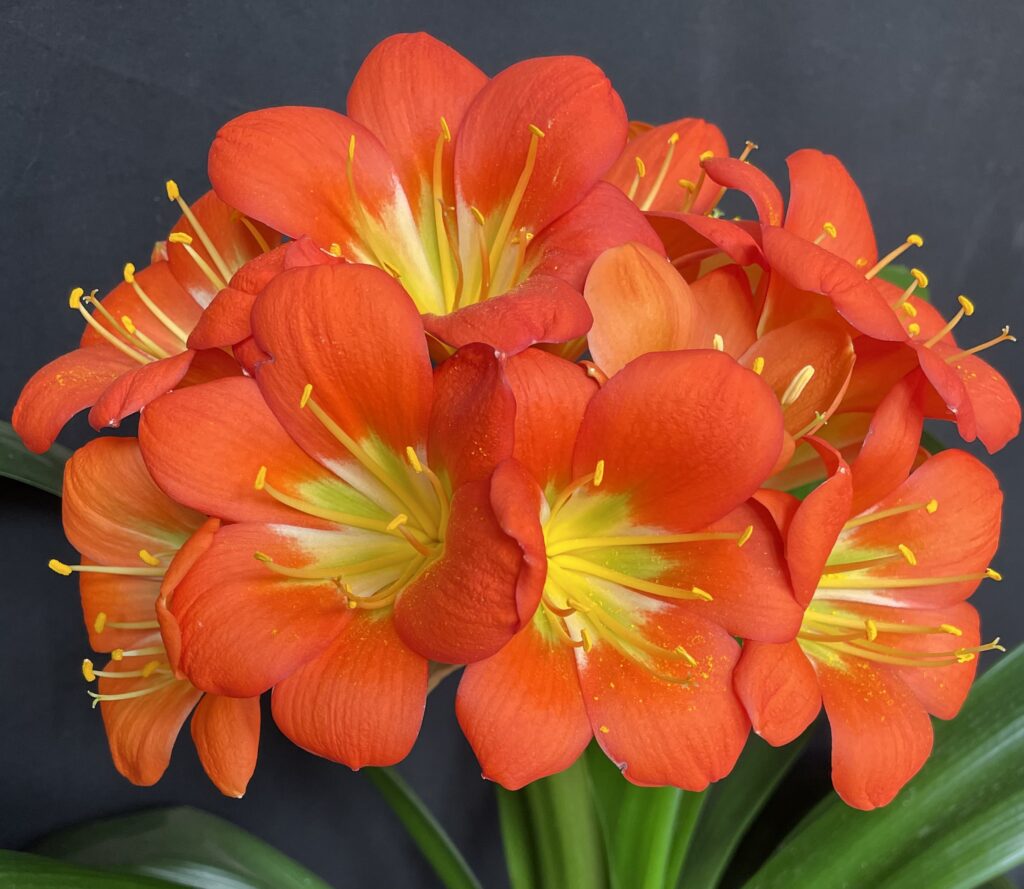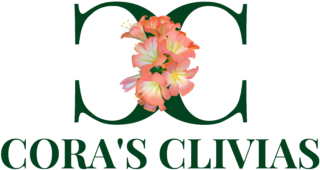I was on a bus on my way to work in Pretoria in September 1986 when I noticed a solitary orange Clivia in a pot on the sidewalk in front of a hardware store. That became my first Clivia and the beginning of an ever-expanding collection.
I joined the Pretoria Clivia Club sometime during the last years of the previous millennium, but I was unable to attend meetings because we live on a farm near Kimberley. At the time, the internet was something new and we were not as connected as we are today. I decided not to renew my membership, and consequently, my collection stayed ordinary.
FIRST LESSON: Other Clivia people are important if you want to improve your collection and enjoy your plants.
JOIN THE SOCIETY
My father showed me how to pollinate Clivia flowers and every now and then he bought me some new plants in Pretoria. The first time I noticed a new and interesting plant flowering from my own seed, I was hooked. I started reading everything I could lay my hands on. I spent hours on the Clivia Forum, but only once I began visiting shows and breeders did the quality of my collection start to improve. Before I knew it, I had a space problem because of the proliferation of my own plants’ offspring as well as some purchases.
SECOND LESSON: Clivia growing and collecting without self-discipline and planning can steal your joy.
Plant only the best of the best seed you can buy or breed.
When I started to buy these improved plants and seeds, I was a bit shocked by the price of the best ones, but suffering from Clivia Fever, I made numerous unwise purchases.
THIRD LESSON: Buying with limited knowledge can turn out to be very expensive. One very good plant can be a far better purchase than buying ten lesser plants at the same total price.
Cultivating Clivias in the Northern Cape wasn’t a problem until the number of plants became a problem. I simply moved the pots under the overhang of our thatched roof for winter and kept them under my trees in summer. Eventually, however, I had to buy my first little tunnel with an extra plastic layer that I added in winter for frost protection.
On colder nights (below -3ºC) I used small blower heaters to raise the temperature in the tunnel, but fortunately, this happens only a few times during winter. After a few bad flowering years, I realised that during the winter the plastic significantly reduced the light in my growing areas. I now roll up the plastic during the day and only lower it on very cold nights.
Since 2016 we have been experiencing periods of extreme heat like never before, sometimes even reaching 40ºC and more.
I now keep new offsets aside and watch them very closely during their first summer.
Increasing the height of my shade house, together with the application of short bursts of a fine mist on the exterior of the shade houses and hosing down the floors and walls, also help to bring temperatures down. Water dripping on the leaves during the heat of the day must be prevented.
Root loss can be a problem during heat waves, but I find that Kelpak (a root growth stimulant, not a fertilizer) improves the roots.
I also always keep round river stones near my shade houses to correct plants, help establish offsets and stabilize loose plants.
FOURTH LESSON: Every region has its own strong points and problems. Join a club in your area for good advice. I am now a member of both the Bloemfontein and Pretoria Clivia Clubs.
After buying my first Clivia seed I was extremely nervous about germinating such an expensive seed in the winter. I lost some seeds during the first few years, before applying Pikkie and Elize Strumpher’s germination methods, and now I have a very high success rate.
One of the advantages of our high average temperatures seems to be that it gives seedlings an energy boost. Seedlings that survive here become very strong plants. Because I have had great outcomes from seed, I am now very positive about purchasing seed. Furthermore, my seedlings seem to do better in our climate than adult plants that I bring in from other areas.
I have learnt so much from visiting other growers both locally and internationally. My Clivia friends have become real friends with whom I often talk.
FIFTH LESSON: Try to visit other growers.
You learn from every visit.
I absolutely love and enjoy every single aspect of Clivia growing … barring fighting diseases.
I think we should treat other Clivia enthusiasts with the kindness and respect we desire for ourselves – after all, sitting alone with your plants is lovely, but not much fun. In the end, growing Clivias is just as much about people as it is about plants.

